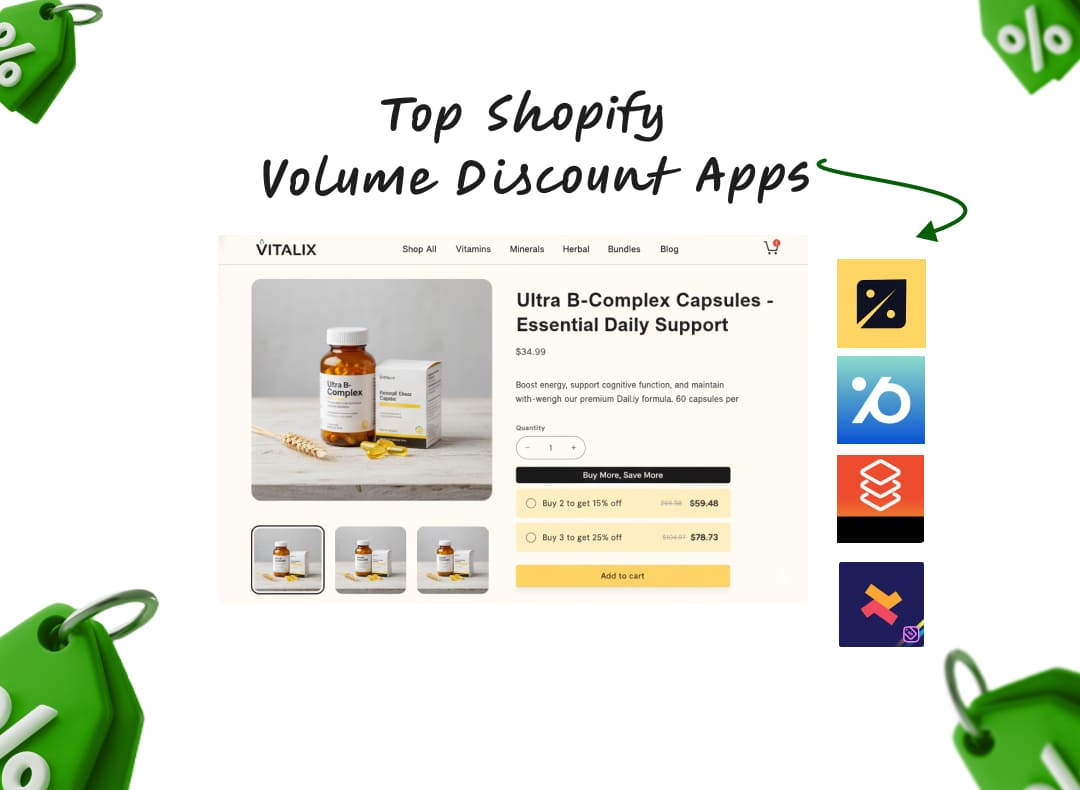Introduction
Post purchase behavior — what customers think, feel and do after they buy — shapes future loyalty, reviews and repurchase decisions.
Post purchase behavior is the set of actions and reactions a customer has after a purchase and is central to the customer experience.
Post purchase behavior determines whether a first-time buyer becomes a repeat customer or a one-time return. In eCommerce and retail, this includes how customers use the product, whether the product met expectations, whether they leave reviews, request returns, or promote the brand. Improving the post purchase experience reduces cognitive dissonance, increases satisfaction and drives lifetime value. Brands can influence this stage with clear product information, fast shipping, transparent returns and targeted post-purchase messaging. Tools like Easy Bundles, Fly Bundles, Checkout Wiz and Kite help brands automate and optimise post purchase flows to boost retention.
What is Post Purchase Behavior
Post purchase behavior refers to the actions, emotions, and decisions of a customer after buying a product or service. It includes how they evaluate their purchase, whether they are satisfied or dissatisfied, and how that experience influences their future buying decisions.
In marketing, post purchase behavior is a critical stage of the consumer decision-making process. After the purchase is made, customers assess whether the product or service meets their expectations. This evaluation determines if they become loyal to the brand, share positive reviews, or experience post purchase dissonance, also known as buyer’s remorse.
A positive post purchase experience often leads to higher customer satisfaction, repeat purchases, and strong brand advocacy. On the other hand, a negative experience can result in returns, cancellations, or poor reviews. Businesses that monitor and manage post purchase behavior through feedback loops, surveys, and customer support are more likely to build long-term loyalty and trust.
Understanding post purchase behavior allows brands to improve retention, refine product quality, and create a seamless customer journey from purchase to advocacy.
Importance of Post Purchase Behavior for Businesses
Post purchase behavior plays a crucial role in shaping customer loyalty, brand reputation, and long-term business growth. It directly influences whether a customer becomes a repeat buyer, refers others, or switches to a competitor.
When brands understand and optimize post purchase behavior, they can enhance customer satisfaction, reduce churn, and improve overall profitability.
A positive post purchase experience builds emotional connections and reinforces customer trust. It encourages repeat purchases and generates valuable word-of-mouth marketing.
For example, when customers receive timely delivery updates, easy return options, and personalized follow-ups, they associate the brand with reliability and care.
Key Stages of Post Purchase Behavior
Understanding the stages of post purchase behavior helps businesses identify where customers might experience satisfaction, doubt, or regret. These stages guide how brands can respond effectively to ensure a positive customer experience and long-term loyalty.
1. Product Use and Evaluation
After the purchase, customers begin using the product and forming opinions based on its performance and quality. This stage determines whether expectations set before purchase are fulfilled. Brands must ensure that product descriptions, visuals, and instructions are accurate to minimize disappointment and returns.
2. Satisfaction or Dissatisfaction
Customer satisfaction occurs when the product meets or exceeds expectations, leading to repeat purchases and positive reviews. Dissatisfaction arises when the product or service fails to deliver on its promise, often resulting in complaints, returns, or negative word-of-mouth. Monitoring satisfaction through surveys and feedback tools helps brands identify issues early.
3. Cognitive Dissonance
Also known as buyer’s remorse, cognitive dissonance happens when a customer questions their purchase decision. It is common with high-value or emotional purchases. Brands can reduce dissonance by providing reassurance through post purchase emails, tutorials, or transparent return policies. Timely communication helps reinforce the value of the product and builds confidence in the decision.
4. Feedback and Advocacy
Once customers evaluate their experience, they often share feedback publicly through reviews or privately through surveys. Satisfied customers can become brand advocates, recommending the brand to others. Encouraging reviews, offering loyalty rewards, and engaging customers via follow-up emails or social media strengthens advocacy and retention.
Types of Post Purchase Outcomes
The outcome of post purchase behavior determines whether a customer strengthens their relationship with a brand or decides not to return. Every purchase leads to one of three major outcomes — satisfaction, cognitive dissonance, or loyalty — each shaping the long-term perception of the brand.
Customer Satisfaction
Customer satisfaction occurs when the product or service meets or exceeds expectations. Satisfied customers often engage in repeat purchases, leave positive reviews, and refer others to the brand. This outcome reinforces trust and builds brand loyalty. Businesses can maintain satisfaction by ensuring quality products, reliable customer support, and transparent post purchase communication.
Post Purchase Cognitive Dissonance
Cognitive dissonance, or buyer’s remorse, arises when a customer doubts their decision after making a purchase. It can be caused by high prices, confusing information, or competing alternatives. To reduce this, businesses should provide reassurance through personalized follow-ups, how-to guides, and customer success resources. Proactive engagement through tools like Checkout Wiz and Kite can help customers feel supported and confident about their purchase.
Customer Loyalty and Advocacy
Customer loyalty is the most valuable post purchase outcome. Loyal customers repeatedly choose the same brand, even when competitors offer similar products. They become advocates who recommend the brand to others and contribute to organic growth. Brands can nurture loyalty by implementing post purchase programs like reward points, subscription bundles, and exclusive offers using solutions such as Easy Bundles and Fly Bundles.
Focusing on these outcomes helps businesses optimize the post purchase experience, lower return rates, and drive consistent revenue through retention. Understanding these behaviors empowers brands to refine their customer engagement strategy and build stronger, longer-lasting relationships.
Common Examples of Post Purchase Behavior
Real-world examples of post purchase behavior help illustrate how customers respond after buying and how brands can use these insights to strengthen relationships and improve satisfaction.
eCommerce Purchases and Returns
In online shopping, post purchase behavior often involves how customers interact with the brand after receiving their order. For example, a buyer may be satisfied if the product matches the description, arrives on time, and performs as expected. On the other hand, a customer might initiate a return if the item is the wrong size or color, or if the quality does not meet expectations. Providing a smooth return process and transparent communication through tools like Checkout Wiz enhances customer trust and reduces negative experiences.
Product Reviews and Feedback
After evaluating their purchase, many customers share reviews on websites, social media, or marketplaces. Positive reviews reflect satisfaction and influence potential buyers, while negative feedback highlights areas for improvement. Brands that acknowledge reviews, respond to concerns, and act on feedback can significantly improve their post purchase perception and credibility.
Loyalty and Repeat Purchases
A customer who consistently buys from a brand demonstrates positive post purchase behavior. This may be driven by satisfaction, trust, or brand alignment. Offering loyalty points, subscription-based bundles, or special discounts through apps like Easy Bundles and Fly Bundles encourages repeat purchases and advocacy.
Cognitive Dissonance or Buyer’s Remorse
In certain cases, customers may regret their purchase decision soon after buying. For instance, someone purchasing a high-end smartphone might feel uncertain after discovering a new model was launched. Businesses can reduce this post purchase dissonance by providing reassurance through educational content, extended warranties, or follow-up communication to validate the purchase decision.
Post Purchase Engagement
Brands that maintain communication beyond checkout — such as thank-you messages, how-to tutorials, or cross-sell recommendations — create a stronger post purchase experience. Integrating engagement flows with Kite and Checkout Wiz helps businesses maintain ongoing touchpoints that transform buyers into long-term customers.
These examples highlight how every interaction after a sale contributes to brand reputation, customer trust, and future sales. Managing these post purchase behaviors effectively ensures consistent retention and positive customer advocacy.
How to Improve Post Purchase Behavior
Improving post purchase behavior is essential for increasing customer satisfaction, reducing churn, and building loyalty. A well-structured post purchase strategy helps brands create seamless customer experiences that extend beyond checkout. By focusing on transparency, engagement, and proactive support, businesses can convert first-time buyers into repeat customers and advocates.
Manage Customer Expectations
Setting the right expectations before and after a purchase reduces the chances of dissatisfaction. Accurate product descriptions, clear images, detailed size charts, and transparent shipping timelines help customers make informed decisions. Once the purchase is complete, following up with order confirmations and delivery updates reinforces trust and confidence.
Offer a Seamless Returns and Exchange Experience
A frictionless return process directly influences post purchase satisfaction. Customers are more likely to buy again if they know returning or exchanging an item is simple and fair. Use tools like Checkout Wiz to automate return workflows, send instant status notifications, and allow self-service exchanges. A clear and visible return policy builds reassurance and minimizes buyer’s remorse.
Personalize Post Purchase Communication
Personalized communication creates emotional connections and strengthens brand relationships. Send thank-you emails, product usage guides, care tips, and loyalty offers tailored to each customer. Platforms like Kite can automate this process by triggering customized messages based on order type or product category, improving engagement and reducing post purchase dissonance.
Gather and Act on Customer Feedback
Actively collecting feedback helps brands understand customer satisfaction and identify improvement opportunities. Use post purchase surveys, product rating requests, or NPS forms to capture honest insights. Once feedback is received, act quickly—acknowledge concerns, resolve issues, and communicate changes. Demonstrating responsiveness shows customers that their opinions matter.
Build Loyalty and Retention Programs
Incentivize repeat purchases with personalized loyalty programs. Offer discounts, early access, or exclusive bundles to returning customers. Tools like Easy Bundles and Fly Bundles help create customized post purchase offers and product pairings that encourage repurchase and increase average order value.
Educate and Reassure Customers
After the sale, brands should continue nurturing confidence through educational content. Share tutorials, product care guides, and FAQs that help customers use their purchase effectively. This reduces cognitive dissonance and increases satisfaction with the product.
By combining personalization, automation, and feedback-driven optimization, businesses can significantly improve post purchase behavior. The result is stronger customer loyalty, fewer returns, and a positive brand image that drives long-term growth.
Measuring Post Purchase Behavior
Measuring post purchase behavior helps businesses understand customer satisfaction, identify friction points, and improve retention strategies. Tracking the right metrics allows brands to see how customers feel after buying and what actions they take next. By using data-driven insights, brands can create more effective post purchase experiences that boost loyalty and lifetime value.
Net Promoter Score (NPS)
The Net Promoter Score (NPS) measures how likely customers are to recommend your brand to others. It’s a direct indicator of satisfaction and loyalty. A high NPS suggests positive post purchase behavior, while a low score indicates the need for better follow-up, service, or communication.
Customer Satisfaction Score (CSAT)
CSAT surveys measure immediate satisfaction with the purchase or service experience. Asking customers how satisfied they are right after delivery or interaction helps businesses assess whether expectations were met. Tracking CSAT trends over time highlights strengths and areas that need attention.
Customer Effort Score (CES)
CES evaluates how easy it was for a customer to complete a post purchase action — such as making a return, contacting support, or redeeming a reward. A low effort score means customers find your process simple and intuitive. Tools like Checkout Wiz and Kite can streamline these touchpoints to minimize friction and improve CES scores.
Repeat Purchase Rate
The repeat purchase rate measures how many customers return for another transaction. It’s one of the clearest indicators of successful post purchase behavior. Brands using retention tools like Easy Bundles and Fly Bundles can encourage repeat orders by offering dynamic bundles or cross-sell recommendations that match customer preferences.
Return Rate
Monitoring the return rate helps identify dissatisfaction or mismatched expectations. High return rates may indicate issues with product quality, sizing, or delivery accuracy. Using automated return workflows through Checkout Wiz allows brands to track and analyze these patterns efficiently.
Customer Reviews and Feedback
Reviews are qualitative insights into post purchase satisfaction. Positive reviews reflect strong customer advocacy, while negative ones reveal gaps in experience or product performance. Analyzing recurring themes in feedback helps brands make informed improvements and enhance trust.
By combining these metrics, businesses gain a complete view of post purchase behavior. The goal isn’t just to reduce returns or complaints—it’s to continuously improve the customer journey. Measuring these key indicators ensures every stage after purchase contributes to higher satisfaction, loyalty, and sustainable growth.
Role of Technology and Automation in Post Purchase Experience
Technology plays a vital role in optimizing post purchase behavior and improving customer retention. With automation, brands can streamline communication, simplify returns, and deliver personalized experiences that enhance satisfaction and loyalty. A well-designed post purchase system ensures that every customer feels valued even after the transaction is complete.
Automated Order Tracking and Notifications
Automated order tracking keeps customers informed about every stage of their purchase — from dispatch to delivery. Real-time updates reduce anxiety, improve trust, and minimize support queries. Integrating tools like Kite allows businesses to send branded, automated notifications via email or SMS, ensuring customers always know where their order stands.
Smart Returns and Exchanges
Managing returns is a key part of post purchase behavior. Automated returns solutions like Checkout Wiz enable customers to initiate returns, print labels, and track refunds without manual intervention. A fast, transparent process reassures buyers and strengthens brand reputation. Smart return systems also collect valuable insights about product issues and customer satisfaction trends.
Personalized Post Purchase Messaging
Automation platforms help brands deliver timely and relevant communication after purchase. Using tools such as Easy Bundles and Fly Bundles, businesses can create personalized follow-up campaigns, recommend complementary products, or offer exclusive discounts to drive repeat purchases. Personalized engagement helps prevent cognitive dissonance and encourages long-term loyalty.
Customer Feedback and Analytics
Collecting post purchase feedback at scale is easier with automated tools. Brands can schedule surveys, track satisfaction metrics like NPS or CSAT, and analyze sentiment through data dashboards. These insights allow businesses to refine their products, update policies, and optimize overall customer experience based on real-time feedback.
Loyalty and Reward Automation
Automation can also power loyalty programs and reward systems. Businesses can automatically assign points, offer tier-based rewards, and trigger promotional emails for repeat customers. Integrating loyalty tools with post purchase workflows ensures customers feel appreciated and motivated to stay engaged with the brand.
Seamless Integration Across Platforms
A connected post purchase ecosystem integrates with CRM, shipping, and marketing systems to create a unified customer experience. For example, connecting Kite for notifications, Checkout Wiz for returns, and Easy Bundles for retention campaigns allows brands to manage the entire post purchase journey from a single dashboard.
By leveraging automation, businesses not only enhance the efficiency of post purchase processes but also build stronger, trust-based relationships. This technological foundation ensures that every post purchase interaction — from confirmation to repeat order — reinforces satisfaction and loyalty.
Conclusion
Post purchase behavior is one of the most powerful factors influencing customer satisfaction, retention, and lifetime value. It defines how customers perceive a brand after they complete a purchase and determines whether they become repeat buyers or churn. Managing post purchase behavior is not only about solving problems after a sale — it’s about creating lasting impressions that strengthen customer trust and loyalty.
Businesses that focus on the post purchase stage can transform one-time transactions into ongoing relationships. Clear communication, quick returns, personalized follow-ups, and loyalty programs all play a major role in shaping a positive experience. By using post purchase solutions such as Checkout Wiz, Easy Bundles, Fly Bundles, and Kite, brands can automate engagement, simplify return processes, and increase retention through consistent, data-driven interactions.

.svg)
.svg)
.svg)
.svg)
.svg)
.svg)
.svg)
.svg)


.svg)
.svg)
.avif)

.svg)







.svg)












.svg)




.svg)


